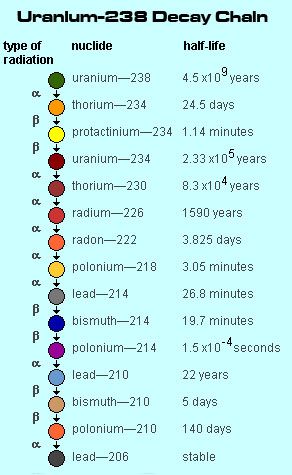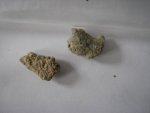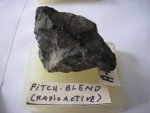Antharak
0
- Joined
- Apr 24, 2013
- Messages
- 549
- Points
- 43
Ah that's not bad at all then.
Just watch your exposure when venting the radon buildup. It isn't the measurable dose but the volume of contaminated air you inhale that will get you. Radon is heavy so pour it out in a still air environment - I see lots of folks blow the radon out with their breath, a real bad idea.
Pouring is just what I do, I check the wind then put the box on the ground turn it on it's side and open it.
Good to talk with someone that knows what they are talking about.
Radon is so insidious, enters your lugs as a gas, then decays into Polonium 218, a metal and sits in your lung as the decay chain continues, all metals.
Here is the decay chain for u-238, from the website of United Nuclear.

Remember folks uranium in not the only isotope found in ore samples.























